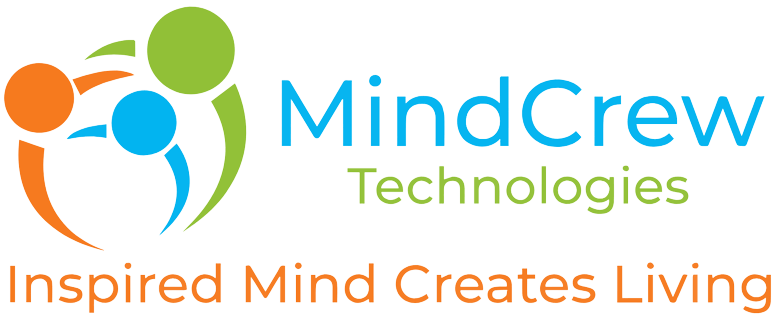From Chaos to Cohesion: Transforming Your Software Development Team with Effective Handover Strategies
H ave you ever found yourself in a software development team that feels like pure chaos? Deadlines are missed, communication is lacking, and there’s an overall sense of disorganization. It can be incredibly frustrating and demotivating. But fear not! In this blog post, we’re going to show you how effective handover strategies can transform your team from a chaotic mess to a cohesive unit. Get ready to say goodbye to the madness and hello to streamlined processes, improved collaboration, and successful project deliveries. Let’s dive in and discover the secrets behind transforming your software development team into a well-oiled machine!
Custom development is the art of turning unique ideas into tailored solutions that stand apart in a world of standardization.
– Mehul Nahar
Introduction: Why Change Software Development Teams?
As your business grows, so too does the demand on your software development team. The team that delivered successful projects in the past may no longer be able to keep up with the pace of change. This can lead to frustration and a feeling of being overwhelmed.
When this happens, it’s time to consider changing your software development team. But why? And how can you ensure a smooth transition?
There are many reasons why you might need to change your software development team. Perhaps the team is no longer able to meet deadlines, or the quality of their work has deteriorated. Maybe you’re simply not happy with the direction the team is going in, or you feel they could be more productive.
Whatever the reason, changing your software development team can be a daunting task. But with careful planning and execution, it doesn’t have to be.

Strategies for Optimizing Handover Processes
here are a number of strategies that can be employed to optimize handover processes and improve team cohesion. One key strategy is to establish clear and concise communication protocols. This means setting up expectations for how information will be shared between team members, and ensuring that everyone is on the same page in terms of what needs to be communicated and when.
Another important strategy is to create standardized documentation for all project deliverables. This ensures that everyone has access to the same information and reduces the likelihood of miscommunication or confusion. Additionally, having templates or checklists for handover items can help to streamline the process and ensure that nothing is forgotten or overlooked.
It is also crucial to provide training and support for team members who are new to the handover process. This can help them feel more comfortable and confident in their roles, and make the transition smoother for everyone involved.
The Benefits of Automated Handover Strategies
Automated handover strategies can help software development teams achieve greater cohesion and better outcomes. By automating key tasks related to team communication and collaboration, these strategies can help reduce the amount of time spent on manual processes, improve team productivity, and promote better information sharing. In addition, automated handover strategies can also help teams to avoid errors that can occur when tasks are manually completed.
How to Improve Collaboration Among Team Members
If your software development team is struggling with communication and collaboration, it may be time to reassess your handover strategies. Implementing some simple changes can help to improve the flow of information between team members and improve the overall efficiency of your team.
Here are a few tips on how to improve collaboration among team members:
- Encourage open communication: Make sure that all team members feel comfortable communicating openly with each other. Encourage them to share ideas and concerns freely.
- Establish clear roles and responsibilities: Each team member should know what their role is and what is expected of them. This will help to avoid confusion and ensure that everyone is working towards the same goal.
- Set up regular meetings: Regular meetings provide an opportunity for team members to catch up with each other and stay up-to-date on the project. They also provide a chance to identify any issues or potential roadblocks.
- Encourage feedback: Encourage team members to give feedback to each other, both positive and negative. This helps to create a more open environment where people feel comfortable sharing ideas and suggestions.
Implementing Effective Documentation Practices
As your software development team grows, it becomes increasingly important to have cohesive and effective handover strategies in place. One key element of successful handovers is effective documentation practices. By documenting key processes and decisions, you can ensure that everyone on the team is on the same page and aware of the current state of the project.
There are a few things to keep in mind when documenting for handover purposes:
- Make sure that all relevant stakeholders are involved in the documentation process. This includes developers, testers, business analysts, project managers, etc.
- Keep the documentation up-to-date throughout the project lifecycle. Regularly review and update documents as necessary to reflect changes in scope, schedule, or other factors.
- Use a consistent format and style for all documents. This will make it easier for everyone on the team to find and use the information they need.
- Store documents in a central location where they can be easily accessed by all team members. A shared network drive or online repository such as SharePoint or Confluence are good options.
By following these best practices, you can ensure that your documentation is an effective tool for facilitating successful handovers between team members.
Tips for Effective Communication Among Teams
The following tips will help ensure effective communication among your software development team members:
- Define the roles and responsibilities of each team member.
- Establish clear lines of communication between team members.
- Encourage team members to share information and ideas openly.
- Encourage team members to provide feedback to one another.
- Promote a culture of collaboration among team members.
Conclusion
To sum it up, effective handover strategies are essential for software development teams. By designing a process that promotes communication and collaboration between team members, you can help ensure successful transitions from one phase to the next. With careful planning and implementation of these strategies, you can create a cohesive environment where everyone is working together towards the same goal – making sure the project is completed successfully on time and within budget.








Pablo Villalpando
December 9, 2019SEO is always changing so leaving the strategy and tactics to Onum has more than paid for itself. We estimate ROI is over 10 to 1 – I can’t say enough about this team.
Pablo Villalpando
December 9, 2019Onum has been extremely consistent and reliable through our entire engagement. Our results speak for themselves.
Pablo Villalpando
December 9, 2019It also gives you insights on your market’s behavior such as location, times of activity, frequency of searches, technologies used, product preferences, etc.